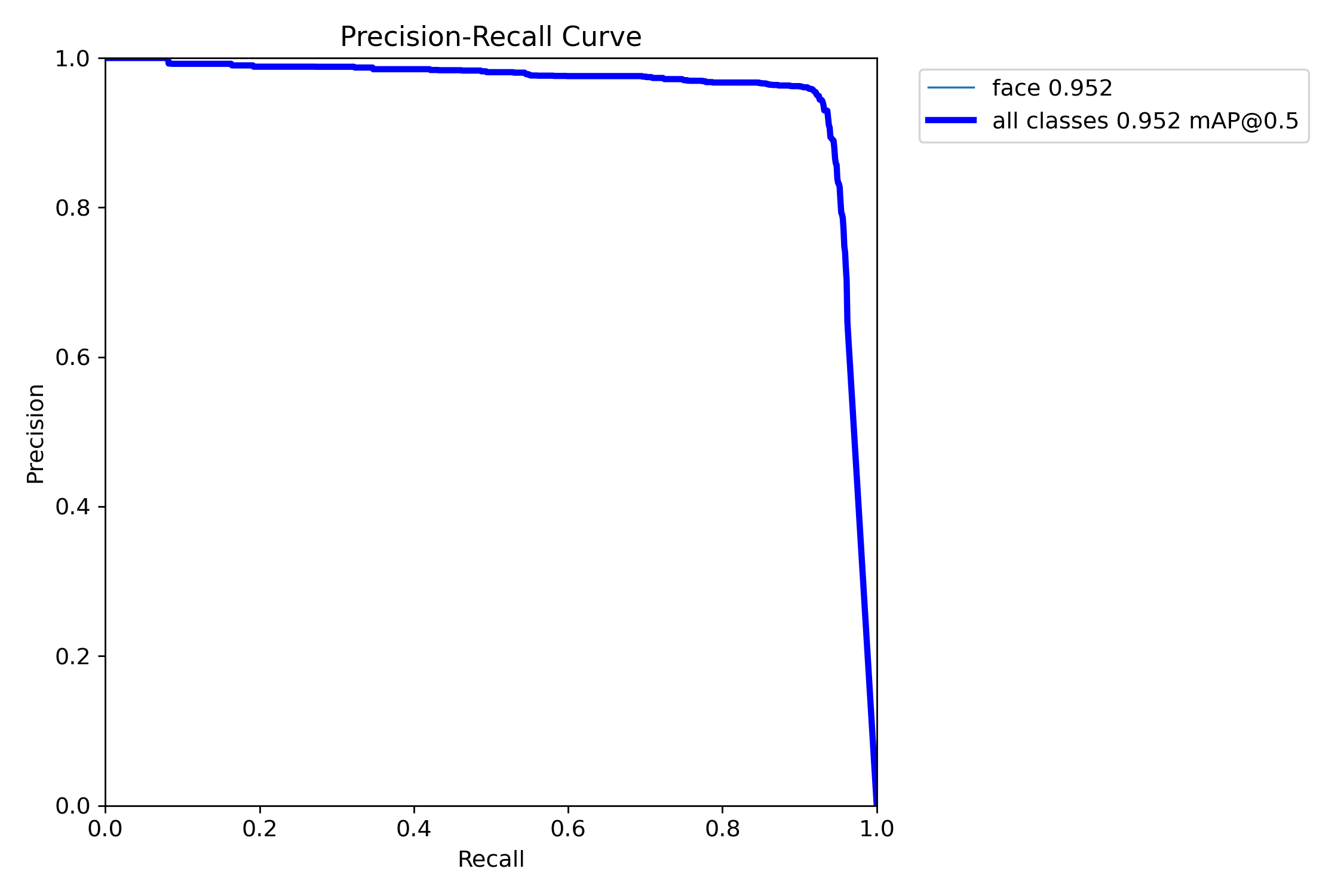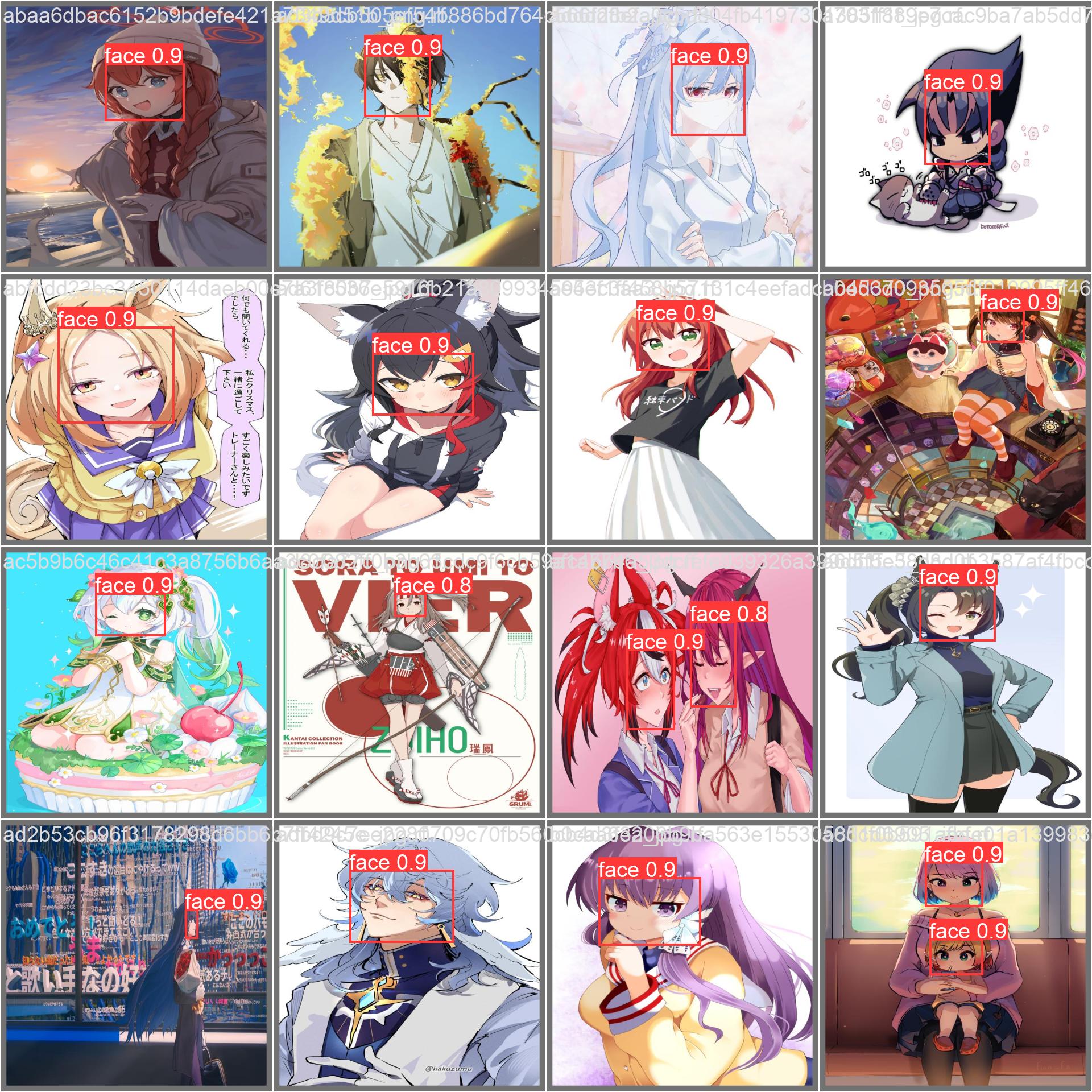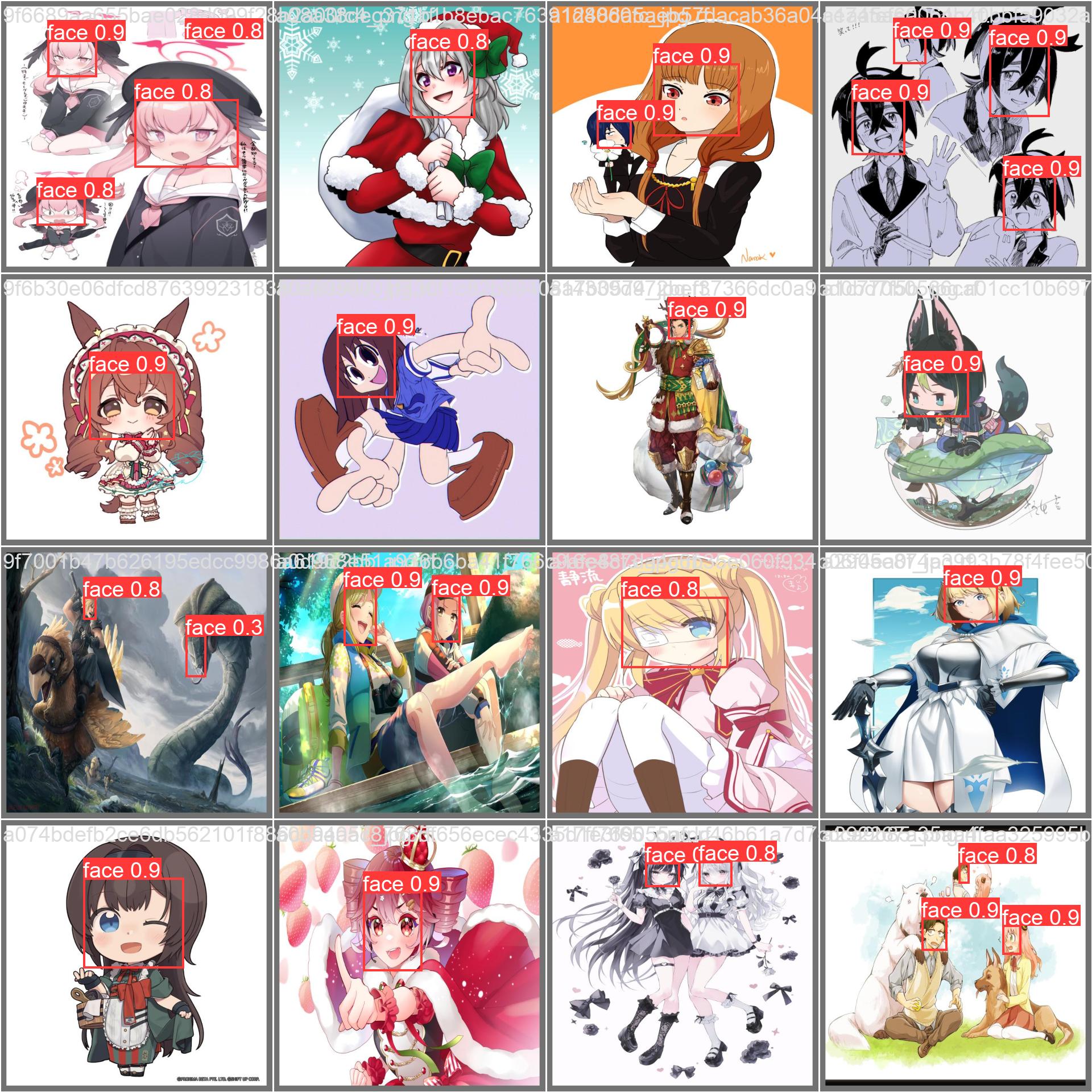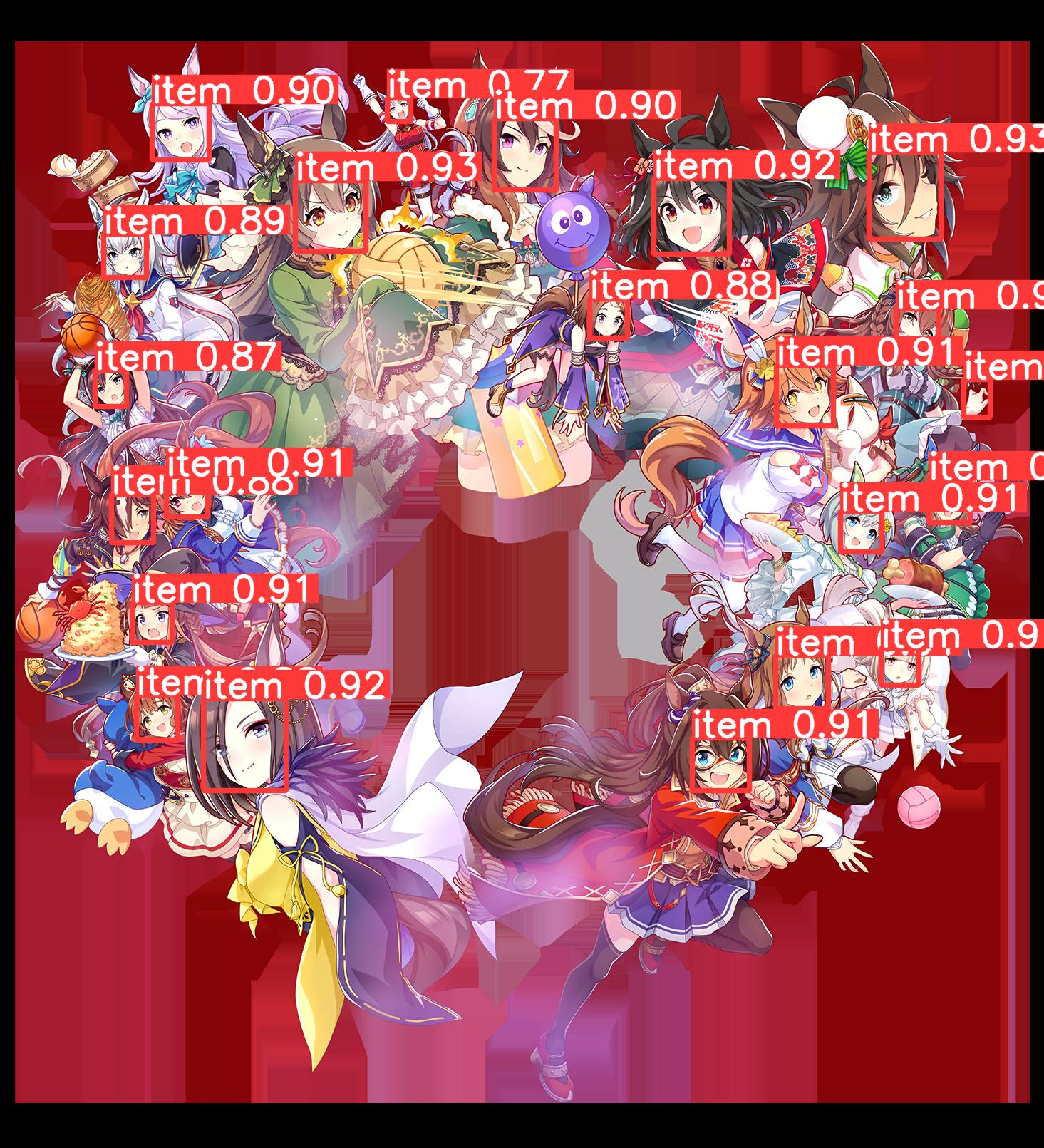license: agpl-3.0
base_model:
- Ultralytics/YOLOv8
library_name: ultralytics
pipeline_tag: object-detection
tags:
- anime
- face
- yolov8
- face detection
model-index:
- name: Fuyucchi/yolov8_animeface
results:
- task:
type: object-detection
metrics:
- type: precision
value: 0.953
name: mAP50(box)
- type: precision
value: 0.956
name: Precision
- type: recall
value: 0.919
name: Recall
- type: precision
value: 0.532
name: mAP50-95(box)
yolov8_animeface
Anime Face Detection using YOLOv8
Dataset
Dataset was made created with 10 000 images manually annotated from safebooru. Split was train 70, val 20, test 10.
Performance
This model is based on yolov8x6. It has been trained on the said dataset for 300 epoch at 1280px*1280px. It took ~110 hours to train on a RTX A4000.
On my dataset, the model performs particularly well with the default parameters.
Images Instances Box(P R mAP50 mAP50-95):
1002 1562 0.957 0.924 0.955 0.534
Speed: 1.3ms preprocess, 81.9ms inference, 0.0ms loss, 0.8ms postprocess per image
While it doesn't provide a huge mAP50-95, its predictions are always correct on the files I've tested. Confidence could be higher, but the model is very precise.
 Confusion matrix of the model, generated on the test set
Confusion matrix of the model, generated on the test set
 PR curve of the model, generated on the test set
PR curve of the model, generated on the test set
Other metrics are available in the ./demo/val subfolder.
Demo
Comparison with an existing model
While we can argue about the comparison between two models from different generations, I believe it is interesting to compare this model with zymk9's model, based on yolov5. They both have the same purpose and were trained in the same fashion.
On the same dataset with the same parameters (conf=0.001 & iou=0.6), yolov8x6-animeface produces better metrics than the one on yolov5x.
yolov8-animeface:
Images Instances Box(P R mAP50 mAP50-95):
1002 1562 0.956 0.919 0.953 0.532
Speed: 1.2ms preprocess, 81.2ms inference, 0.0ms loss, 1.0ms postprocess per image
yolov5-anime:
Images Instances Box(P R mAP50 mAP50-95):
1003 1566 0.778 0.685 0.633 0.232
Speed: 1.5ms pre-process, 85.5ms inference, 1.4ms NMS per image at shape (32, 3, 1280, 1280)
yolov5-anime provides better results when images are resized at 640px, but it still is inferior to yolov8-animeface with the same parameters. Surprisingly enough, yolov5 is way more confident that yolov8. However, it also has way more false positives.
Conclusion
While this model performs greatly on my dataset, my metrics can differ from yours. One lighter model might be released on a later occasion.
Based on YOLOv8 by Jocher, G., Chaurasia, A., & Qiu, J. (2023). Ultralytics YOLO (Version 8.0.0) [Computer software]. https://github.com/ultralytics/ultralytics





